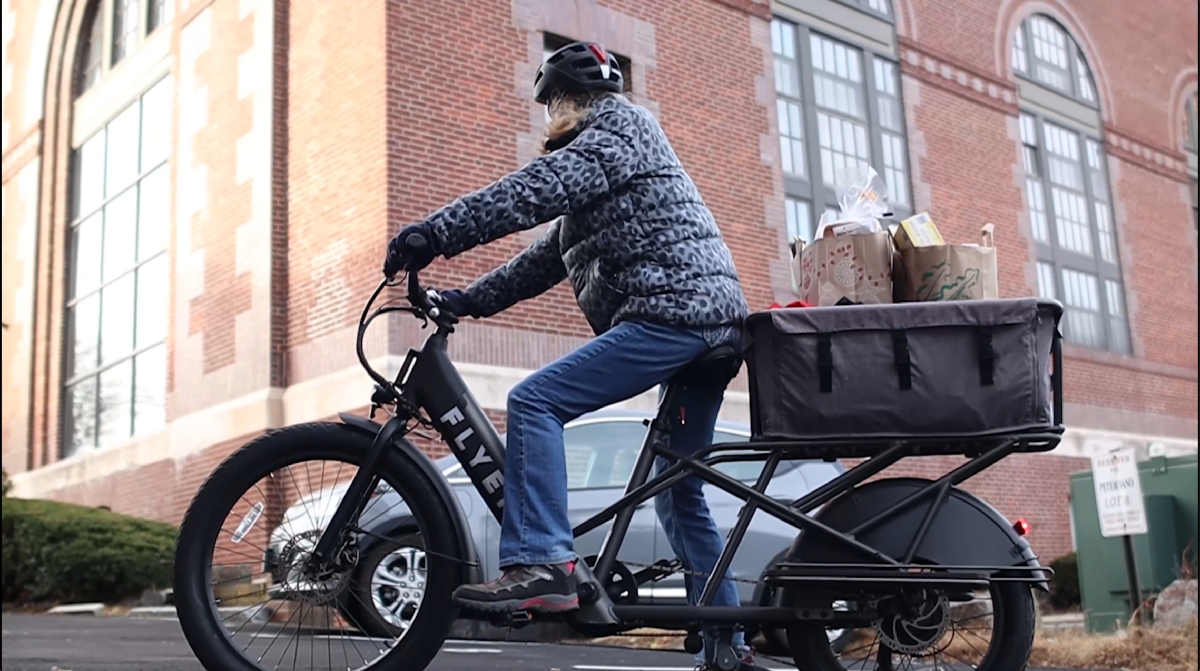The Apollo is Veo’s most recent light electric vehicle, and the company describes it as the world’s first successful shared micromobility company. However, this goes beyond just a simple two-wheeled electric scooter or bike. There is space for two persons.
Not to be confused with the luxury electric scooter manufacturer Apollo from Canada, the Apollo is a class 2 electric bike designed for city commuters.
PROGRAMS FOR ELECTRIC BIKES
Throttles are absent from Class 1 e-bikes, which are frequently utilised in shared electric bike programmes. Veo bikes need some effort from the user since the motor is triggered when the cyclist pedals. While riding a throttle-controlled e-bike, which uses the pedals mostly as stationary foot rests, is more akin to riding a motorbike.
Being a class 2 e-bike, Veo promotes the throttle as a fantastic feature for assisting with inclines. In reality, it’s likely to be used anywhere, not only on slopes.
Even Veo’s own micro mobility statistics point to the popularity of throttle-controlled e-bikes. Despite the fact that the business only now provides single-seat electric bicycles, it does have versions that can be throttle-controlled and pedal-assisted.
E-SCOOTER
In contrast to the bulk of firms that offer shared mobility, Veo bikes produces its own electric bikes and e-scooters. The business began utilising this strategy in 2017. That demonstrates that the Apollo e-custom bike’s design and construction were successful.
Due to its multiple seats, the 750W Apollo is perfect for transporting people or larger loads than the typical shared e-bike or e-scooter seen on most city blocks. The bike is built to last and has a 400-pound weight capacity (181 kg).
The e-versatility bike’s benefits are increased by the fact that it can carry two persons and their belongings, as opposed to simply one. Discounts are offered with a veo promo code. This makes it more appealing than before as a substitute for driving.
APOLOGIES TO APOLLO
Veo’s co-founder and CEO, Candice Xie, explained:
We will need to launch new vehicle types in order to meet the tiny mobility market’s rising demand. According to several studies, polls, and comments from riders, towns, and nations throughout the world, there is a critical demand for safe tandem riding and cargo carrying, which led to the development of the Apollo.
We must increase ridership and introduce new types of journeys to micromobility in order to support cities in meeting their ambitious climate goals.
CLAIMS
The demand for Veo motorcycles with throttle controls, according to Veo, is four times more than the desire for pedal-assist only versions.
Unfortunately, hitting the gas pedal won’t turn the Veo Apollo into a powerful motorcycle.
Although the 750W motor offers excellent acceleration, the bike’s top speed is set at a more than acceptable 15 mph (25 km/h), which is perhaps for the best for an e-bike designed to carry passengers but see little use.
GEAR FOR ELECTRIC BIKES
Veo’s founder and president, Edwin Tan, explained the need for two-seat Veo bikes with space for baggage as follows:
If micro mobility could satisfy people’s needs for a range of trip types and purposes, then perhaps more people would be riding bicycles. More people could think about switching to micro mobility if there was a second seat and room for cargo.
For the past five years, Veo has led the way in shared micro mobility innovation, bringing more vehicles and safety innovations to market than any other company, including the first seated scooter in the sector.
THIRD APOLLO
Unfortunately, the new Veo Apollo electric bike won’t be available for purchase anytime soon. The brand-new electric bike is scheduled to make its debut in the early months of 2023.
A broad range of other two-seater electric bikes are following the trend to carry more people, in the meantime.
SHARED BIKES AND SCOOTERS
Sarasota is delighted to provide additional transportation options for locals and tourists. Throughout the City, Veo Ride Inc. will run a scooter and Veo bike sharing programme under a two-year contract.
This programme is a component of the City’s Sarasota in Motion plan, which sees bicycles, scooters, and now trolleys as useful transit links.
Transit options for the first and last miles simplify city trips and ease gridlock. Anyone over the age of 18 may easily use Veo by driving in one of the city’s excellent parking lots and then locating a spot to park a scooter or bicycle.
CARS VEO
Veo automobiles are restricted to safe areas via geofencing. Bicycle lanes and 30-mph motorways should be used by scooters and bicycles. Sidewalks are permitted in areas with little or no foot traffic and no other route. Local workers will fix and swap out vehicles, return stolen bikes and scooters to corrals, and respond to complaints.
A low-income equity programme and operating savings are offered by Veo Bikes. Download Veo for navigation, pricing, and parking information. Register with Veo to receive a discount for Advance Auto Parts.
A HERITAGE OF BIKE-MAKING
Tan is in charge of the supply chain, product development, and operations of Veo. Some believe he was destined for it. Tan spent many hours as a young boy working at his parents’ bicycle company, where he “became fascinated with gadget design, R&D, technology, and production.”
Tan’s passion for bicycles persisted when he was studying mechanical engineering at Purdue University and working at Trek, where he helped create some of the best bicycles ever made.
VARIABLES ARE CONTROLLED BY VERTICAL INTEGRATION
Make notes to help a product flourish economically. Veo’s success depends on vertical integration. Veo’s supervision of all the significant suppliers has resulted in more trustworthy, higher-quality products at regulated prices.
From concept to fabrication to assembly, Veo’s vertically integrated production process assures quality and safety.
This sets it apart from competitors that source scooter fleets from a limited number of pre-made options and allows for fast iteration and straightforward change depending on customer input and local demands.








